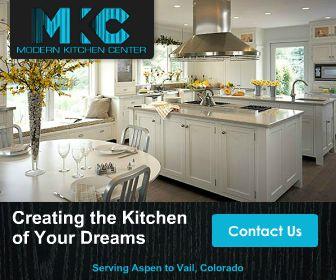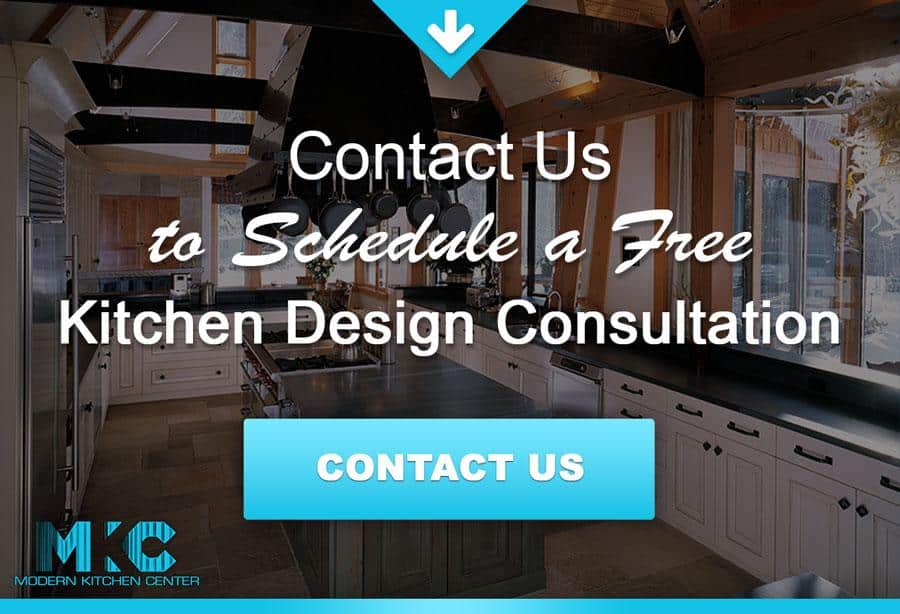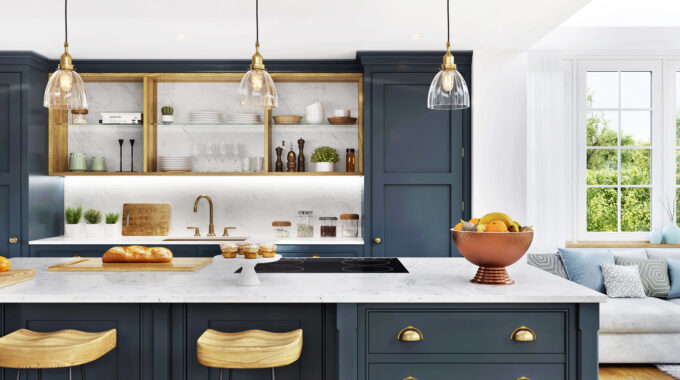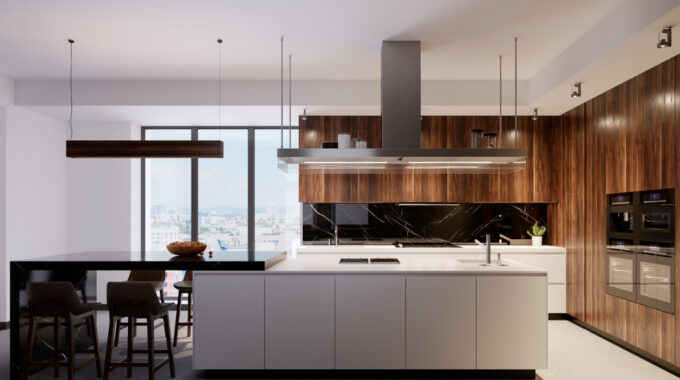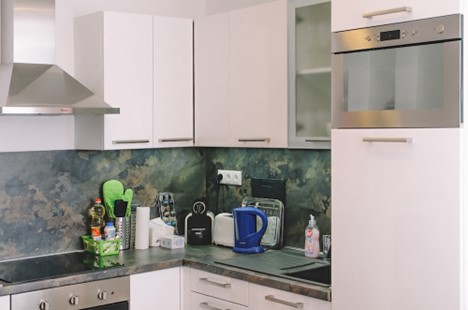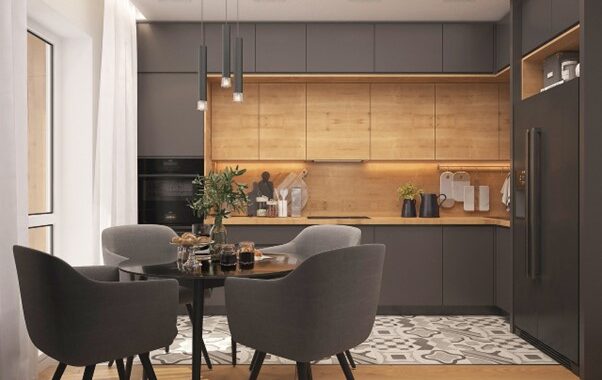
The Importance of Color Psychology in Kitchen Design
Imagine walking into a room painted in a vibrant shade of orange.
How does it make you feel? Does the color blue invoke a sense of calm and relaxation? These aren’t random sensations; they result from a fascinating interplay between colors and our emotions. As the renowned artist Pablo Picasso once remarked, “Colors, like features, follow the changes of the emotions.”
Color has always been an effective tool for conveying emotions and ideas. Artists and interior designers have long believed that the unspoken language of hues has the ability to sway our moods and even influence our appetites. This deep understanding emphasizes how color psychology can shape our everyday experiences, especially when reaching into the heart of our homes: the kitchen.
Understanding Color Psychology
Colors possess a remarkable ability to evoke specific emotional reactions within us. When we encounter different colors, our brains react on both conscious and subconscious levels, triggering emotions and influencing our behaviors.
Color psychology delves into how colors influence our emotions, thoughts, and behaviors. It examines the intricate link between the colors we see and how they impact our psychological responses. This relationship between colors and moods is deeply rooted in our biology and cultural context. It is a valuable tool in various design contexts, including creating functional and attractive kitchen spaces.
Color psychology studies how different colors can trigger specific emotional and mental reactions. It reveals the powerful impact that colors have on our minds, often in ways that operate beneath our conscious awareness. This interplay between colors and our minds significantly impacts how we experience different environments. For instance, warm colors like orange or red evoke feelings of energy, excitement, and enthusiasm. In contrast, cooler colors, such as green and blue, are more likely to create a sense of calm and relaxation.
As we consider the application of color psychology to kitchen design, we recognize the potential to create kitchens that serve practical purposes and elicit desired emotional responses.
By thoughtfully choosing colors based on their psychological impact, we can shape kitchen environments that align with the intended atmosphere and enhance the overall experience for everyone who enters the space.
Impact of Different Colors on Mood, Appetite, and Well-Being
Colors possess a unique ability to communicate with our emotions, often speaking volumes without a single word being uttered. They can evoke feelings ranging from warmth and excitement to calmness and serenity, influencing our physical responses. Let’s explore a few examples of how different colors can evoke various feelings and emotions:
Red: Energetic and Appetizing
The color red is associated with dynamism, energy, and passion. It’s known to increase heart rate and create a sense of urgency. Regarding appetite, red is believed to have a remarkable ability to stimulate hunger and excitement for food.
This explains why many fast-food chains integrate red into their logos and interiors – to create an environment that triggers a sense of urgency and enthusiasm to eat. Incorporating red accents or elements into a kitchen can add a touch of vibrancy and playfulness, encouraging a lively atmosphere that complements social interactions.
Blue: Tranquil and Soothing
Blue is often regarded as one of the most calming colors. Its cool and tranquil nature can induce a sense of relaxation and serenity. Imagine a pale blue backdrop in a kitchen; it could evoke a feeling of calmness, making it a suitable color for a space where cooking, sharing meals, and unwinding are priorities.
The color blue has even been shown to reduce stress and promote a sense of well-being. Introducing shades of blue into your kitchen design can create an oasis of tranquility in the heart of your home.
Green: Refreshing and Harmonious
Associated with nature and growth, green brings a refreshing and harmonious energy to a space. Lighter shades of green can instill a sense of balance and renewal. In contrast, deeper greens can evoke feelings of richness and luxury.
Adding a touch of green to your kitchen can create a connection to the outdoors, infusing the space with a revitalizing ambiance. This color choice can be especially effective in areas where healthy cooking and sustainability are emphasized.
Yellow: Invigorating and Joyful
Yellow is often associated with warmth, energy, and positivity. It can evoke happiness and brightness, making it an excellent choice for spaces where creativity and social interaction are encouraged. In a kitchen, touches of yellow can invigorate the atmosphere, fostering a sense of optimism and camaraderie among those who gather there.
White: Pure and Airy
White embodies purity, cleanliness, and simplicity. It is a blank canvas, allowing other colors and elements to shine brightly. A kitchen adorned in white exudes cleanliness and spaciousness, creating a welcoming and open feel. White kitchens evoke modernity and elegance, offering a versatile backdrop for diverse design styles and personal tastes.
Gray: Sophisticated and Neutral
Gray is a versatile neutral that exudes sophistication and equilibrium. It’s often associated with practicality and timelessness. A gray kitchen can provide a backdrop highlighting other colors and design elements, allowing them to stand out. This neutral shade fosters calmness and understated elegance, making it an excellent choice for a harmonious and adaptable kitchen space.
Black: Bold and Dramatic
Black exudes power, sophistication, and depth. It can create a dramatic and bold statement when used thoughtfully. While not commonly associated with kitchens, black can be introduced in accents, countertops, or cabinetry to add elegance and contrast. The color demands attention and can add a sense of luxury to your kitchen design.
Choosing the Right Colors for The Heart of the Home
Once relegated solely to meal preparation, the kitchen has gracefully transformed into the heart of contemporary homes. It’s a realm where culinary meets hospitality, and families gather to connect, share stories, and forge memories.
This multifaceted role emphasizes the crucial role of color in shaping the kitchen’s atmosphere and interactions. From the first sip of morning coffee to the joyful clatter of dinner preparations, the colors you select possess the extraordinary power to elevate these experiences and infuse the environment with a sense of purpose and resonance.
Enhancing Kitchen Attributes with Strategic Color Schemes
Color schemes are the palette from which your kitchen canvas is painted. Each hue carries the potential to accentuate specific attributes, influencing the perception of the space. Warm, earthy tones wrap the kitchen in a cozy embrace, cultivating an ambiance reminiscent of a cherished gathering place.
In contrast, lighter shades introduce an illusion of openness and roominess, which is helpful for compact kitchens. Opting for clean, crisp color palettes amplifies the aura of cleanliness and organization, instilling the kitchen with a rejuvenating and inviting essence.
Harmonizing with Natural Light
The interplay between natural light and color is a dynamic duo that should not be underestimated. The intensity and direction of sunlight can transform how colors appear. In sun-drenched spaces, cooler colors can counteract the glare. Similarly, in dimly lit kitchens, lighter hues can amplify the illumination.
Size Matters: Maximizing Space Perception
The size of your kitchen serves as a crucial determinant in color selection. Lighter shades have the magic of visually expanding smaller areas, making them feel more open and breathable. For larger kitchens, deeper colors can cozy up the space, making it feel more intimate and inviting.
Existing Elements and Seamless Integration
Your color choices should harmonize with the existing elements of your kitchen. Cabinetry, countertops, and flooring play vital roles in the visual composition. The color palette should integrate these components, creating a unified aesthetic that flows effortlessly.
Creating Cohesion: Blending with Overall Home Decor
While the kitchen is a unique and functional space, it is intricately woven into the broader narrative of your entire home. As you navigate the task of selecting colors for your kitchen, it’s crucial to recognize its interconnectedness with the surrounding living spaces.
The color scheme you choose is pivotal in harmonizing your kitchen with the rest of your home’s decor, creating a cohesive visual journey that seamlessly unfolds from room to room.
A Symphony of Aesthetics
Imagine your home as a symphony, with each room contributing its distinct melody to the harmonious composition. In this arrangement, the kitchen forms an essential note that should resonate in harmony with the surrounding spaces. A coherent color scheme ensures the transition feels natural and fluid as you move from your kitchen to adjoining areas, like a seamless progression from one chapter to the next.
Enhanced Visual Appeal and Balance
Cohesive color coordination amplifies the visual appeal of your entire home. When colors interact harmoniously, they form a tapestry of unity that’s both pleasing to the eye and emotionally resonant. The sensation of balance and unity that this coordination imparts can create a sense of calm and stability within your living environment. It transforms your house into a unified sanctuary, where every corner contributes to an overall sense of aesthetics and tranquility.
A Sense of Flow and Continuity
Blending your kitchen’s color palette with the broader home decor offers a sense of flow and continuity. As you move through different rooms, the transition feels effortless, almost like turning the pages of a well-crafted story. This sense of continuity fosters a holistic experience, enveloping you and your guests in a welcoming and immersive environment.
A Final Stroke of Individuality
While creating a cohesive color scheme is essential, infusing your unique personality into the design is also important. The beauty of this cohesion lies in its ability to accommodate individuality. Within a harmonious color palette framework, you can still introduce elements that reflect your personal taste and style, allowing your home to be a genuine reflection of who you are.
Evoking Emotion Through Combination
In kitchen design, colors transcend aesthetics, transforming into emotions brushed onto surfaces. The art lies in the skillful pairing of colors to craft an atmosphere that deeply resonates with you. Even if you have a fondness for specific hues, placing them in the wrong combination could quickly disrupt the entire ambiance of your kitchen.
Balancing Colors for Emotional Impact
Think of color combinations as mixing ingredients for a recipe. When you get the balance right, you create something truly special. The way colors work together can make you feel a certain way.
Imagine combining two colors that are opposite on the color wheel. They play off each other to create lively energy. For example, imagine pairing cool blue with warm orange. It’s like a soothing breeze meeting a burst of energy, bringing a balanced liveliness to your kitchen.
Creating Harmony with Color Pairs
Color pairs that sit next to each other on the color wheel can create a harmonious, flowing feel. It’s like listening to a calm and soothing melody. Picture blending shades of green and blue in your kitchen – the natural harmony between these colors can make your space feel tranquil and inviting, a perfect setting for cooking and unwinding.
Putting It into Practice
- Bold and Balanced: Combine deep reds with rich greens for an energetic and balanced kitchen. These colors can strike perfect harmony, creating a vibrant and inviting environment.
- Peaceful Blend: If a calming atmosphere is what you’re after, think about pairing soft blues and gentle purples. This combination creates a peaceful vibe that is perfect for a serene cooking space.
You can design a stylish kitchen that stirs up the right emotions by experimenting with different color combinations.
Final Thoughts
As you embark on your journey to infuse color psychology into your kitchen design, remember that you’re not just selecting hues; you’re orchestrating emotions and weaving an atmosphere. The colors you choose have the power to transform a functional space into a realm of feelings and interactions. From the vibrancy of red to the serenity of blue, each color is a brushstroke that contributes to the canvas of your kitchen’s story.
Understanding the impact of colors on emotions empowers you to curate an environment that aligns with your lifestyle, preferences, and desired experiences. The kitchen, once merely a place for culinary endeavors, now becomes a sanctuary where memories are made, conversations flourish, and meals are shared.
At Modern Kitchen Center, we understand the importance of style and functionality. We specialize in providing top-quality kitchen products and solutions catering to your needs. Whether you’re looking for space-saving appliances, innovative storage solutions, or stylish kitchen accessories, our team is dedicated to helping you create the kitchen of your dreams.
Visit Modern Kitchen Center to explore our wide range of products and services. From sleek and efficient appliances to cutting-edge storage solutions, we have everything you need to create a personalized and beautiful kitchen that maximizes your counter space.



